Recent Posts
Home fire prevention tips for the fall and winter months
12/11/2024 (Permalink)
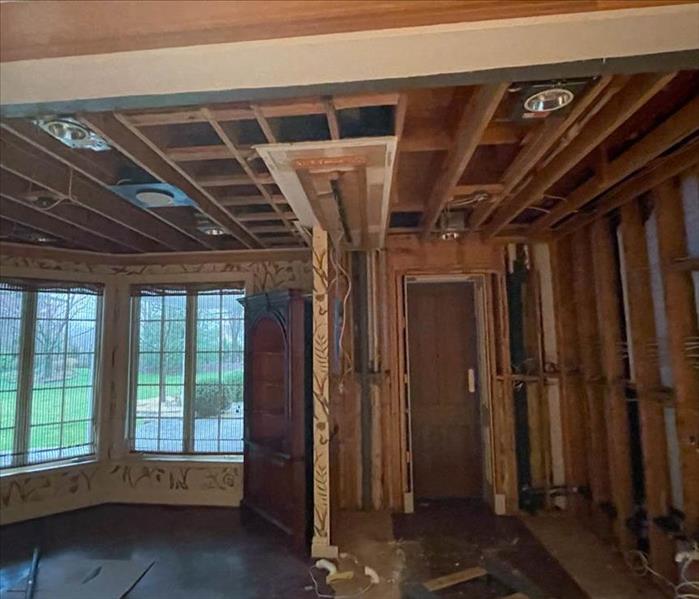 In the event of a fire, having a well-practiced emergency plan can save lives.
In the event of a fire, having a well-practiced emergency plan can save lives.
As the fall and winter seasons approach, the risk of home fires increases due to the heightened use of heating equipment, holiday decorations, and fireplaces. Taking the necessary precautions to prevent fires during these months can protect your home and loved ones. Here are some expert insights on home fire prevention for the colder seasons.
Inspect and Maintain Heating Equipment
Heating equipment is one of the leading causes of home fires during fall and winter. According to the National Fire Protection Association (NFPA), heating equipment accounted for 14% of all home fires between 2014 and 2018. To minimize risk:
- Have your furnace inspected and serviced annually by a professional.
- Clean your fireplace and chimney before using them.
- Keep space heaters at least three feet away from anything flammable.
- Never leave a heater unattended, especially overnight.
Be Cautious with Holiday Decorations
While holiday decorations bring cheer, they can also pose fire risks. Avoid using old or damaged string lights, and always turn them off before going to bed or leaving the house. If you’re setting up a Christmas tree, make sure it’s positioned away from heat sources like radiators, fireplaces, and candles. Also, if you have a live tree, keep it well-watered to prevent it from becoming a fire hazard.
Use Fireplaces and Candles Safely
Fireplaces and candles add a cozy ambiance to your home, but they also need to be handled carefully. For fireplace use, ensure the flue is open, and never leave a fire burning unattended. Always use a fireplace screen to prevent sparks from flying into your living area.
If you enjoy lighting candles, place them on stable surfaces, away from flammable materials like curtains or blankets. Consider using flameless LED candles for a safer alternative, especially if you have pets or children.
Test Smoke Alarms and Fire Extinguishers
Regularly testing your smoke alarms is crucial for fire safety, as they provide an early warning in the event of a fire. Replace batteries every six months and ensure that you have smoke alarms installed in every room and hallway. Additionally, keep a fire extinguisher in key areas of your home, such as the kitchen and near the fireplace, and check that it’s in working order.
Create an Emergency Plan
In the event of a fire, having a well-practiced emergency plan can save lives. Make sure all household members know the best escape routes and establish a meeting point outside the home.
By following these fire prevention tips, you can reduce the risk of a fire in your home during the fall and winter months. For professional fire restoration services, contact SERVPRO of Affton/Webster Groves today.
Dehumidifiers and Mold Prevention: What You Need to Know
11/13/2024 (Permalink)
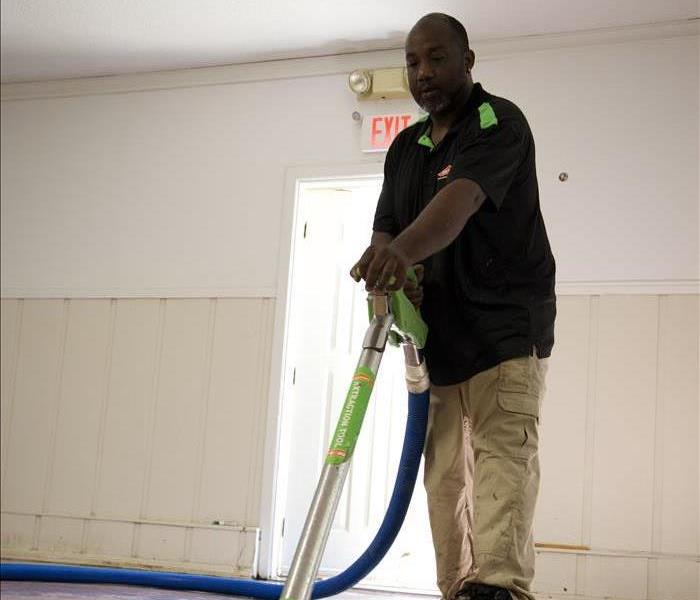 Even with a dehumidifier, it’s important to monitor the humidity in your home regularly.
Even with a dehumidifier, it’s important to monitor the humidity in your home regularly.
Mold is one of the most common problems homeowners face, especially in humid environments. The good news? Dehumidifiers can help you stay ahead of the problem. In this blog, we’ll share expert insights on how dehumidifiers work, why they’re essential for mold prevention, and tips for using them effectively in your home.
How Dehumidifiers Prevent Mold Growth
Mold thrives in environments with excess moisture. When the humidity in your home exceeds 60%, it creates the perfect conditions for mold to grow on walls, ceilings, and even furniture. Dehumidifiers work by reducing the humidity level in the air, making it difficult for mold to develop. By keeping indoor humidity between 30% and 50%, you can significantly lower the risk of mold growth.
According to the Environmental Protection Agency (EPA), maintaining relative humidity below 60% is crucial for preventing mold in homes, especially in areas like basements and bathrooms where moisture tends to accumulate. To learn more, visit the EPA’s guide on mold prevention.
Best Places to Use a Dehumidifier for Mold Prevention
While dehumidifiers can be used in any room of your house, certain areas are more prone to excess moisture. Consider placing dehumidifiers in the following locations:
- Basements: Basements often trap moisture, making them a hotspot for mold growth.
- Bathrooms: Hot showers and poor ventilation can lead to increased humidity levels.
- Kitchens: Steam from cooking and washing dishes can elevate humidity, especially in poorly ventilated spaces.
- Laundry Rooms: Dryers and washing machines generate humidity, increasing mold risk in enclosed spaces.
By targeting these high-moisture areas, you’ll be able to use your dehumidifier more effectively.
Choosing the Right Dehumidifier
Not all dehumidifiers are created equal. When choosing one for mold prevention, it’s essential to consider factors like the size of the room, humidity levels, and energy efficiency. Here are some things to keep in mind:
- Capacity: Ensure your dehumidifier can handle the square footage of the room it’s placed in.
- Auto-Shutoff: Look for a dehumidifier with an automatic shutoff feature to prevent overflow when the water tank is full.
- Energy Star Rating: An energy-efficient dehumidifier can save you money on electricity while maintaining a lower humidity level in your home.
Expert Tip: Keep Humidity in Check
Even with a dehumidifier, it’s important to monitor the humidity in your home regularly. Use a hygrometer to measure humidity levels, ensuring they stay within the recommended range of 30-50%. For severe cases of mold or excess moisture, calling a professional service like SERVPRO® of Affton/Webster Groves can help you effectively manage mold and moisture problems before they get out of hand.
By taking these simple steps and investing in a reliable dehumidifier, you can help protect your home from mold while maintaining a comfortable living environment.
Roof Leaks and Water Damage: Essential Inspection and Repair Tips
10/9/2024 (Permalink)
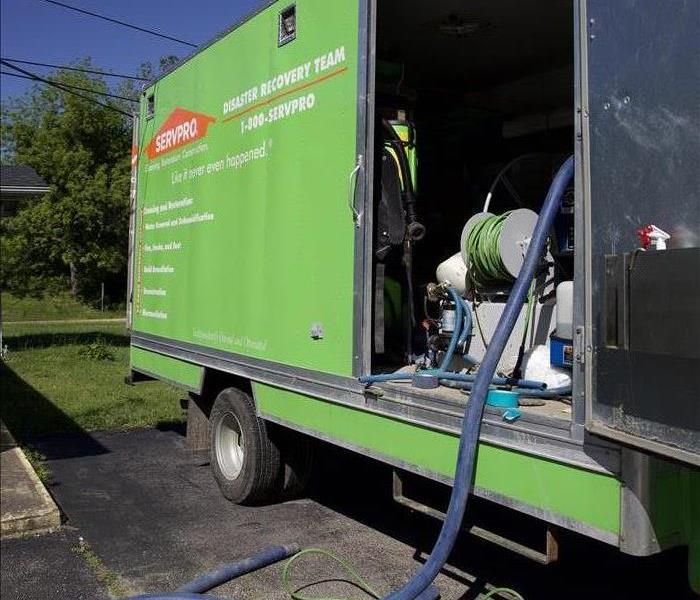 Explore the critical aspects of roof leaks and water damage.
Explore the critical aspects of roof leaks and water damage.
Roof leaks in St. Louis, MO, can be a homeowner's worst nightmare, causing extensive damage if not addressed promptly. This blog explores the critical aspects of roof leaks and water damage, providing you with essential inspection tips and repair guidelines. Learn how to protect your home from potential water damage and maintain its integrity.
Understanding Roof Leaks and Their Impact
Roof leaks are a common issue, especially in older homes. According to a study by RubyHome, approximately 33 percent of homeowners have experienced a roof leak and replaced their roofs because of it. These leaks can lead to significant water damage, compromising the structural integrity of your home. Identifying the signs of a roof leak early on can save you from costly repairs down the line.
Key Indicators of Roof Leaks
Recognizing the signs of a roof leak is crucial for timely intervention. Here are some common indicators:
- Water Stains: Brownish stains on ceilings or walls are a clear sign of water intrusion.
- Mold or Mildew: The presence of mold or mildew on walls or ceilings can indicate prolonged water exposure.
- Dripping Water: Active leaks often present as water dripping from the ceiling during rainfall.
- Warped Shingles: Shingles that are curling, buckling, or missing altogether are common sources of roof leaks.
Regular roof inspections can help detect these issues early, preventing extensive water damage.
Inspection Tips for Roof Leaks
Regular inspections are essential for maintaining your roof's health. Here are some tips to ensure a thorough inspection:
- Visual Inspection: Use binoculars to check for missing or damaged shingles, rusted flashing, and other visible damage.
- Check the Attic: Inspect the attic for any signs of water damage, such as wet insulation or wood rot.
- Look for Sagging: A sagging roof may indicate structural damage caused by prolonged water exposure.
It's recommended to conduct inspections twice a year, preferably in the spring and fall.
Repairing Roof Leaks and Water Damage
If you discover a leak, prompt repair is essential. Here are some steps to take:
- Temporary Measures: Use a tarp to cover the affected area and prevent further water intrusion.
- Professional Assessment: Contact a roofing professional to assess the extent of the damage and recommend repairs.
- Repair or Replace: Depending on the severity, repairs may involve replacing shingles, repairing flashing, or even roof replacement.
Conclusion
Roof leaks and water damage can cause significant issues if left unchecked. Regular inspections and prompt repairs are key to protecting your home. By staying vigilant and proactive, you can prevent minor leaks from becoming major problems. For expert assistance, consider contacting SERVPRO® for reliable inspection and repair services.
For more information on roof leaks and water damage restoration, visit our website. Keep your home safe and secure with timely inspections and repairs.
Missouri Hailstorms: Minimizing Damage and Navigating Insurance Claims
9/11/2024 (Permalink)
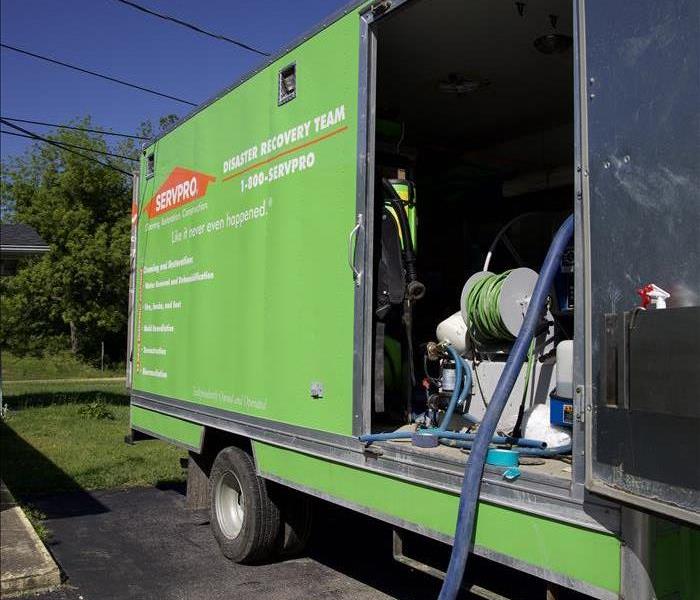 Understanding how to minimize damage & effectively navigate insurance considerations makes a substantial difference in the aftermath of a hailstorm.
Understanding how to minimize damage & effectively navigate insurance considerations makes a substantial difference in the aftermath of a hailstorm.
Missouri is no stranger to severe weather, and hailstorms are among the most frequent and damaging events. These storms can wreak havoc on homes, vehicles, and landscapes, leading to significant repair costs and insurance claims. Understanding how to minimize damage and effectively navigate insurance considerations can make a substantial difference in the aftermath of a hailstorm. Here’s what you need to know.
Understanding the Impact of Missouri Hailstorms
Hailstorms are a common occurrence in Missouri, especially during the spring and summer months. According to the Insurance Information Institute, Missouri ranked fourth in the United States for the number of hail loss claims between 2017 and 2019, with thousands of claims filed annually. Hailstones can range from pea-sized to as large as softballs, causing severe damage to roofs, siding, windows, and vehicles.
Tips for Minimizing Hailstorm Damage
1. Protect Your Home
Regular maintenance and preparation can significantly reduce the damage caused by hailstorms:
- Roof Inspection: Regularly inspect your roof for signs of wear and tear. Replace missing or damaged shingles to maintain the integrity of your roof.
- Impact-Resistant Materials: Consider using impact-resistant roofing materials, which are designed to withstand hail damage.
- Secure Windows and Doors: Install storm shutters or impact-resistant windows to protect against hail impact.
- Yard Maintenance: Trim trees and shrubs to minimize the risk of branches causing damage during a storm. Secure outdoor furniture and decor that could become projectiles.
2. Protect Your Vehicles
If possible, park your vehicles in a garage or under a covered structure during a hailstorm. If no shelter is available, use blankets or specialized car covers designed to protect against hail damage.
Insurance Considerations
1. Review Your Policy
Understanding your insurance policy is crucial in the event of hail damage. Most homeowners' insurance policies cover hail damage, but it’s essential to review the specifics of your coverage, including deductibles and claim limits.
2. Document the Damage
After a hailstorm, thoroughly document all damage with photographs and detailed notes. This documentation will be invaluable when filing an insurance claim.
3. File Your Claim Promptly
Contact your insurance company as soon as possible to report the damage. Provide them with the documentation you’ve gathered and be prepared for an adjuster to visit your property to assess the damage.
4. Seek Professional Assistance
Consider hiring a professional restoration company like SERVPRO® to assess and repair the damage. SERVPRO can provide a detailed estimate that you can submit to your insurance company, ensuring that all necessary repairs are accounted for.
Why Choose SERVPRO?
SERVPRO specializes in storm damage restoration, offering comprehensive services to repair and restore your property. From initial damage assessment to final restoration, our team of experts is equipped to handle every aspect of the recovery process. We work closely with insurance companies to ensure your claims are processed smoothly and efficiently.
Conclusion
Hailstorms are an inevitable part of life in St. Louis, Missouri, but with proper preparation and a clear understanding of insurance processes, you can minimize damage and streamline recovery. Regular maintenance, protective measures, and prompt, detailed insurance claims are key to weathering these storms. Trust SERVPRO to help you restore your home and peace of mind after a hailstorm.
By following these tips and partnering with SERVPRO, you can effectively manage the aftermath of Missouri hailstorms, ensuring your property is well-protected and your insurance claims are handled efficiently.
Safeguarding Business Assets: The Importance of Fire Alarm Systems in Commercial Buildings
8/14/2024 (Permalink)
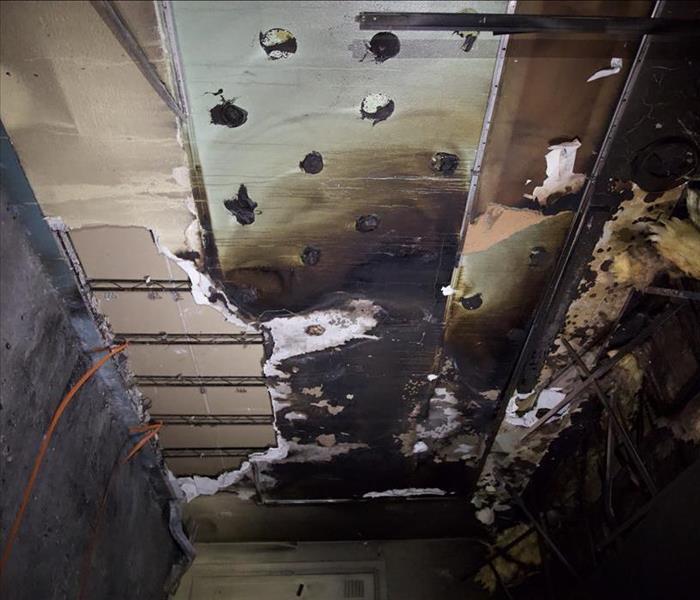 Fire alarm systems are essential in commercial buildings and they can protect your business!
Fire alarm systems are essential in commercial buildings and they can protect your business!
Ensuring the safety of a commercial building involves many elements, but one of the most critical is a reliable fire alarm system. In a bustling city like St. Louis, MO, where businesses thrive, having an effective fire alarm system is not just a legal requirement but a vital safeguard for people and property. This blog explores why fire alarm systems are essential in commercial buildings and how they can protect your business.
Early Detection and Alert
Immediate Response to Fires
A fire alarm system’s primary function is to detect fires at their earliest stages. Early detection is crucial because it allows for a swift response, minimizing potential damage and ensuring the safety of occupants. Modern fire alarm systems are equipped with advanced sensors that can identify smoke, heat, and gas, providing comprehensive protection.
Reducing Response Time
The sooner a fire is detected, the faster the response from emergency services. Fire alarm systems automatically alert the local fire department, ensuring that help is on the way even before the situation escalates. This rapid response can be the difference between a minor incident and a catastrophic event.
Protecting Lives and Property
Ensuring Occupant Safety
In commercial buildings, the safety of employees, customers, and visitors is paramount. Fire alarm systems provide an immediate warning, giving everyone enough time to evacuate safely. In high-occupancy buildings, such as office complexes, shopping centers, and hotels, this early warning is essential to prevent injuries and fatalities.
Minimizing Property Damage
Fires can cause extensive damage to property, leading to significant financial losses. By detecting fires early, fire alarm systems help minimize the spread of flames, reducing the overall damage. This not only protects the building’s structure but also saves valuable assets and data.
Compliance with Regulations
Meeting Legal Requirements
In St. Louis, MO, commercial buildings must comply with local fire safety codes and regulations. Installing and maintaining a fire alarm system is a legal requirement for most commercial properties. Compliance ensures that your business meets safety standards and avoids potential fines or legal issues.
Insurance Benefits
Having a properly maintained fire alarm system can also lower insurance premiums. Insurance companies recognize the reduced risk of fire-related incidents in buildings equipped with reliable fire alarm systems, leading to potential savings on insurance costs.
Maintaining Business Continuity
Reducing Downtime
A fire incident can disrupt business operations, leading to significant downtime and loss of revenue. Fire alarm systems help mitigate these risks by ensuring fires are controlled quickly, allowing businesses to resume operations sooner. This continuity is vital for maintaining customer trust and sustaining business operations.
SERVPRO®: Your Partner in Fire Safety
SERVPRO understands the importance of protecting your commercial property from fire hazards. Our expert team offers comprehensive fire damage restoration services and can assist with fire prevention strategies. Contact us to learn how we can help safeguard your business.
Investing in a reliable fire alarm system is essential for protecting lives, property, and business continuity. In St. Louis, MO, where commercial activities are diverse and dynamic, ensuring that your building is equipped with a state-of-the-art fire alarm system is a crucial step in maintaining safety and compliance.
How to Properly Ventilate Your Home to Prevent Mold
7/10/2024 (Permalink)
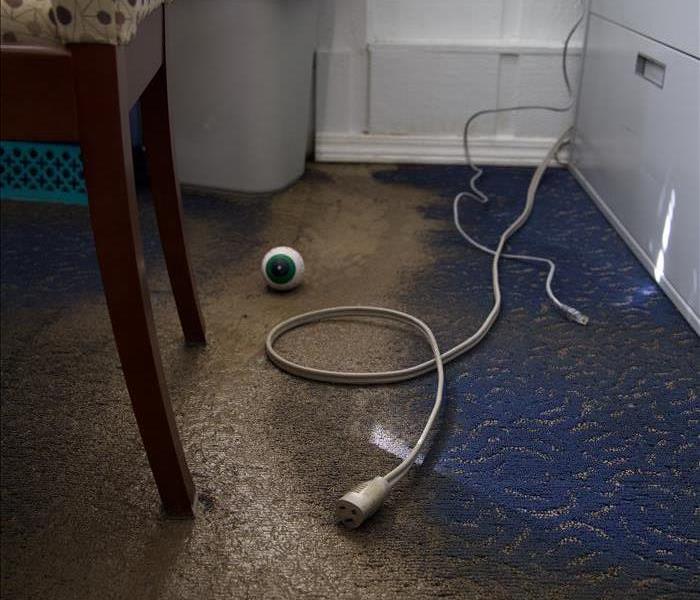 By following these ventilation tips, you can create a well-ventilated home that minimizes the risk of mold issues.
By following these ventilation tips, you can create a well-ventilated home that minimizes the risk of mold issues.
Proper ventilation is key to maintaining a healthy and mold-free home environment. Effective ventilation helps control moisture levels, improve indoor air quality, and prevent mold growth. By following these ventilation tips, you can create a well-ventilated home that minimizes the risk of mold issues.
Use Exhaust Fans in High-Moisture Areas
Areas prone to high humidity, such as bathrooms, kitchens, and laundry rooms, are especially susceptible to mold growth. Use exhaust fans in these spaces to remove excess moisture and humidity from the air. Turn on the exhaust fans during and after activities that generate moisture, such as showering, cooking, and using the washing machine.
Open Windows for Fresh Air Circulation
Allowing fresh air to circulate through your home is essential for proper ventilation. Open windows and doors whenever weather permits to encourage air exchange and prevent stagnant, humid conditions that can promote mold growth. Cross-ventilation by opening windows on opposite sides of your home can help create a natural airflow.
Consider Using Ventilators or Air Exchange Systems
In homes with limited natural ventilation, consider using ventilators or air exchange systems to bring in fresh outdoor air and expel stale indoor air. These systems help regulate indoor air quality and prevent the buildup of excess moisture, which can contribute to mold issues.
Inspect and Maintain Ventilation Systems
Regularly inspect and maintain your ventilation systems to ensure they are operating efficiently. This includes cleaning or replacing air filters in HVAC systems, removing dust and debris from vents, and checking for any blockages that may hinder airflow. Properly maintained ventilation systems can help control humidity levels and prevent mold growth.
Address Moisture Sources and Leaks
In addition to proper ventilation, it's essential to address any moisture sources and leaks in your home. Fixing water leaks, maintaining proper drainage, and ensuring the integrity of your home's exterior can help prevent moisture infiltration and the conditions that foster mold growth.
Use Dehumidifiers When Necessary
In particularly humid climates or areas with persistent moisture issues, using dehumidifiers can aid in controlling indoor humidity levels. Dehumidifiers can help remove excess moisture from the air, especially in basements, crawl spaces, and areas where ventilation may be limited.
Maintain Attic and Roof Ventilation
Proper attic and roof ventilation are crucial for preventing moisture buildup and mold growth. Ensure that your attic and roof have adequate ventilation through vents and fans to promote air circulation and prevent condensation. Proper insulation and ventilation can help protect your home from potential mold issues.
By implementing these ventilation strategies, you can create a well-ventilated home environment that reduces the risk of mold growth. If you have concerns about mold or need professional assistance with mold remediation, SERVPRO® offers comprehensive mold remediation services to help address mold issues and maintain a healthy living environment.
Proper ventilation is a key component of mold prevention, and by taking proactive steps to improve airflow and control moisture, you can help protect your home from the potential hazards of mold.
For more information on ventilation and mold prevention, feel free to reach out to SERVPRO for expert guidance and assistance.
Swift Solutions: The Importance of Timely Water Damage Restoration
6/4/2024 (Permalink)
Water damage is a homeowner's nightmare, capable of wreaking havoc on property and belongings if left unchecked. From burst pipes to natural disasters, the sources of water damage are diverse, but the need for swift restoration remains constant. In this blog, we'll explore the critical importance of timely water damage restoration, focusing on its impact on property preservation, financial savings, and overall peace of mind.
Preservation of Property
- Prevents Structural Damage: Timely water damage restoration is essential for preventing structural deterioration. Water can weaken building materials such as drywall, wood, and insulation, leading to warping, rotting, and eventual collapse if not addressed promptly.
- Mitigates Mold Growth: Moisture from water damage creates an ideal environment for mold and mildew growth. Rapid restoration helps prevent mold infestation, which can cause extensive damage to property and pose health risks to occupants.
- Preserves Belongings: Water damage can wreak havoc on personal belongings such as furniture, electronics, and sentimental items. Timely restoration efforts help salvage and restore items that may otherwise be irreparably damaged by water exposure.
Financial Savings
- Reduces Repair Costs: The longer water damage is left untreated, the more extensive and costly the repairs become. Timely restoration can mitigate the need for costly repairs to structural elements, flooring, and other property components.
- Minimizes Secondary Damage: Water damage can lead to secondary issues such as mold growth, corrosion, and electrical damage if not addressed promptly. By addressing water damage swiftly, homeowners can minimize the risk of secondary damage and associated repair costs.
- Avoids Insurance Complications: Delayed restoration efforts may complicate insurance claims and coverage. Insurance companies often require timely reporting and mitigation of water damage to qualify for coverage, making prompt action essential for maximizing insurance benefits.
Peace of Mind
- Promotes Safety: Water-damaged areas pose safety risks such as slippery surfaces, electrical hazards, and structural instability. Timely restoration helps mitigate safety risks and ensures a safe living environment for occupants.
- Restores Comfort and Normalcy: Water damage can disrupt daily life and compromise the comfort of your home. Timely restoration efforts help restore normalcy by returning the property to a clean, dry, and habitable condition.
- Provides Reassurance: Knowing that professional restoration experts are handling the situation can provide homeowners with peace of mind during a stressful time. Prompt restoration efforts demonstrate a commitment to resolving the issue efficiently and effectively.
Timely water damage restoration is critical for preserving property, saving money, and restoring peace of mind in the aftermath of a water-related incident. By addressing water damage promptly, homeowners can mitigate structural damage, minimize repair costs, and ensure a safe and comfortable living environment for themselves and their families. Whether it's a burst pipe, flooding, or water intrusion from a storm, swift action is key to minimizing the impact of water damage and facilitating a speedy recovery process.
Weathering the Storm: Essential Safety Tips for Derecho Windstorms
5/7/2024 (Permalink)
Derecho windstorms, characterized by intense straight-line winds, can wreak havoc on communities, causing widespread damage and posing serious threats to life and property. Being prepared and understanding how to stay safe during these powerful events is crucial. In this blog, we'll explore essential safety tips to help you weather the storm and protect yourself and your loved ones during Derecho windstorms.
Stay Informed
Knowledge is your best defense. Stay informed about weather conditions by monitoring reliable sources such as the National Weather Service (NWS) and local news channels. Pay attention to storm alerts, watches, and warnings. Having a weather app on your smartphone can provide real-time updates and notifications.
Develop a comprehensive emergency plan for your family or household. Identify safe spaces within your home, such as basements or interior rooms on the lowest floor. Establish a communication plan, including a designated meeting place and an out-of-town contact, in case family members are separated during the storm.
Secure Outdoor Items
Derecho winds can reach extremely high speeds, turning loose outdoor objects into dangerous projectiles. Before the storm hits, secure or bring indoors any outdoor furniture, toys, tools, or other items that could be lifted and carried by strong winds.
Strengthen the structural integrity of your home by reinforcing windows and doors. Consider installing storm shutters or plywood over windows to protect against flying debris. Ensure that exterior doors are secure and have strong locks.
Seek Shelter Indoors
When a Derecho is imminent, seek shelter indoors well before the storm arrives. Stay away from windows and doors, and head to the lowest level of your home, preferably a basement. If a basement is not available, find an interior room on the lowest floor away from corners, windows, doors, and outside walls.
Derecho windstorms often bring heavy rain, hail, and reduced visibility. Avoid unnecessary travel during the storm to prevent accidents and road hazards. If you must drive, pull over to a safe location away from trees and power lines.
Stay Away from Windows and Mirrors
During the storm, stay away from windows and mirrors to minimize the risk of injury from flying glass. If you're in an area prone to Derecho winds, consider installing impact-resistant glass or protective shutters for added safety.
Assemble a well-stocked emergency kit that includes essential items such as non-perishable food, water, medications, first aid supplies, flashlights, batteries, and important documents. Ensure that everyone in your household knows the location of the emergency kit.
Have a Battery-Powered Weather Radio
A battery-powered weather radio is a valuable tool for receiving real-time updates and alerts, especially if power outages occur during the Derecho windstorm. Keep extra batteries on hand to ensure the radio remains operational.
Once the storm has passed, exercise caution when venturing outdoors. Watch out for downed power lines, fallen trees, and other hazards. Avoid flooded areas and report any emergency situations to local authorities.
In conclusion, Derecho windstorms demand vigilant preparation and a commitment to safety. By staying informed, creating an emergency plan, and following these safety tips, you can enhance your resilience in the face of these powerful weather events. Remember, the key to weathering a Derecho is preparedness and a proactive approach to protecting yourself, your family, and your property.
Safeguarding Business: The Crucial Role of Fire Alarm Systems in Commercial Buildings
4/9/2024 (Permalink)
In the dynamic world of commerce, where businesses thrive and people work diligently, the safety of occupants and the protection of assets are paramount. Fire alarm systems stand as a critical line of defense against the devastating impact of fires in commercial buildings. In this blog, we explore the importance of fire alarm systems and their indispensable role in preserving both lives and livelihoods.
Early Detection Saves Lives
- The primary function of a fire alarm system is early detection. Rapid identification of smoke or fire allows for swift evacuation, reducing the risk of injuries or fatalities.
- Commercial buildings house not only businesses but also the people who contribute to their success. Fire alarm systems safeguard the well-being of employees, customers, and visitors, as well as the valuable assets within the premises.
Compliance with Regulations
- Many jurisdictions mandate the installation of fire alarm systems in commercial buildings to comply with safety regulations. Adherence to these standards is not only a legal requirement but also an ethical commitment to the welfare of all occupants.
- Fire alarm systems are interconnected with emergency services. When an alarm is triggered, it automatically notifies the fire department, expediting their response time and minimizing the potential damage caused by the fire.
Prevention of Property Damage
- Beyond protecting lives, fire alarm systems play a pivotal role in preventing extensive property damage. Early detection enables faster intervention, helping to contain the fire before it spreads.
- Modern fire alarm systems are designed to provide comprehensive coverage, incorporating smoke detectors, heat detectors, and sometimes sprinkler systems. This multi-faceted approach ensures a timely response to various types of fires.
Minimization of Business Interruption
- Fires not only pose a threat to safety but can also disrupt business operations. Swift detection and intervention by fire alarm systems help minimize business interruption, allowing for a quicker return to normalcy.
- Advanced fire alarm systems offer remote monitoring capabilities. Business owners and facility managers can receive real-time alerts on their smartphones or computers, enabling them to take immediate action, even when off-site.
Integration with Building Systems
- Fire alarm systems can be integrated with other building systems, such as HVAC and access control. This integration enhances overall safety measures and facilitates a coordinated response in the event of an emergency.
- Fire alarm systems are not solely reactive; they also serve a proactive role by identifying potential hazards before they escalate into full-blown fires. This early identification allows for preventive measures to be implemented.
Employee Confidence and Morale
- The presence of a reliable fire alarm system instills confidence among employees, knowing that their workplace prioritizes safety. This, in turn, contributes to a positive work environment and morale.
- Fire alarm systems require regular testing and maintenance to ensure optimal functionality. Routine inspections and testing help identify any issues and guarantee the system's reliability when it is needed most.
In the ever-evolving landscape of commerce, where the unexpected can unfold, fire alarm systems stand as a stalwart shield against the unpredictable threat of fires. Their importance extends beyond compliance; they are a fundamental component of a comprehensive safety strategy that prioritizes the well-being of occupants and the longevity of businesses. Investing in a robust fire alarm system is not just a legal requirement but a strategic commitment to creating a secure and resilient commercial environment.
Shielding Your Home: Mold Prevention Tips Every Homeowner Should Know
3/6/2024 (Permalink)
Mold prevention is a fundamental aspect of homeownership that goes beyond health considerations. Mold, a common household intruder, can cause structural damage and diminish the aesthetic appeal of your residence. In this blog, we'll delve into essential mold prevention tips tailored for every homeowner, focusing on the non-health-related aspects to foster a resilient living environment.
Maintain Optimal Indoor Humidity
Keep indoor humidity levels in check, aiming for levels below 60%. Use dehumidifiers in damp areas like basements and bathrooms to create an environment less conducive to mold growth.
Act swiftly to repair any water leaks in your home. Leaky roofs, plumbing issues, or malfunctioning appliances can create moisture pockets ideal for mold. Timely repairs mitigate the risk of mold-friendly conditions.
Ensure Proper Ventilation
Adequate ventilation is crucial in preventing mold growth. Use exhaust fans in bathrooms and kitchens to reduce humidity, and ensure that attics and crawl spaces are well-ventilated to discourage moisture buildup.
Gutters and Outdoor Foundation
Keep gutters and downspouts free of debris, ensuring proper drainage away from your home's foundation. Well-maintained gutters prevent water accumulation and reduce the risk of moisture-related problems.
Seal any cracks or openings in walls, windows, and the foundation to prevent water intrusion and limit the entry points for mold spores.
Landscaping with Mold Prevention in Mind
Plan your landscaping to minimize mold-friendly conditions. Avoid planting shrubs too close to the home, as this can limit air circulation and create shaded, damp areas conducive to mold growth.
Ensure the ground around your home slopes away from the foundation. This simple measure helps prevent water accumulation near the structure, reducing the risk of moisture seepage.
Regular Cleaning and Dusting
Establish a regular cleaning routine to remove dust, dirt, and potential mold spores. Pay extra attention to high-moisture areas like bathrooms and kitchens. Arrange furniture to optimize airflow and prevent moisture buildup in confined spaces. Adequate ventilation reduces the risk of mold growth in hidden corners. Store items with proper spacing in well-ventilated areas. This practice allows air circulation and minimizes the risk of mold growth on stored items.
Roof Maintenance
Schedule regular roof inspections and maintenance to address any potential leaks. A well-maintained roof is a key element in preventing water intrusion and subsequent mold-related issues.
Indoor Appliances
Appliances like clothes dryers and stoves should be properly ventilated to the outside. This prevents the buildup of excess moisture in indoor spaces. If you have indoor plants, be mindful of watering practices. Avoid overwatering and use well-draining soil to prevent excessively humid conditions that mold thrives on.
Implementing these mold prevention tips is a proactive investment in the longevity and aesthetic appeal of your home. By fostering an environment that is less conducive to mold growth, you're not only shielding your property from potential structural damage but also ensuring a resilient and welcoming living space for years to come.
Mold prevention is an ongoing commitment to the well-being of your home, enhancing its durability and maintaining its visual allure.





 24/7 Emergency Service
24/7 Emergency Service





